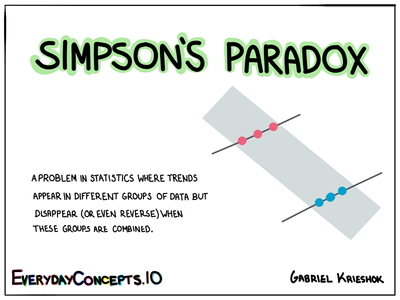Simpson's Paradox

Category
Also Known As...
L o w B i r t h - W e i g h t P a r a d o xDefinition
A problem in statistics where trends appear in different groups of data but disappear (or even reverse) when these groups are combined.Origin
First described by Edward Simpson in 1951, the term was popularized from a 1976 account in Scientific American by Martin Gardner, where in a famous study from University of California, Berkeley admissions, it appeared that men were more likely to be admitted than women, but when examining individual departments, there was in fact a slight bias in favor of women.